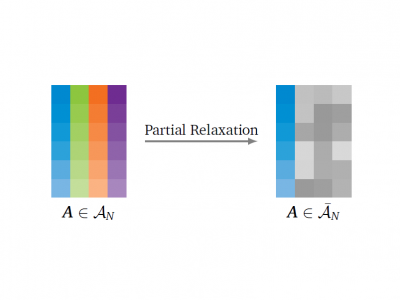Documents
Presentation Slides
IEEE SAM 2022 Tutorial: Four Decades of Array Signal Processing Research: An Optimization Relaxation Technique Perspective

- Citation Author(s):
- Submitted by:
- Marius Pesavento
- Last updated:
- 19 February 2023 - 3:42pm
- Document Type:
- Presentation Slides
- Document Year:
- 2020
- Presenters:
- Marius Pesavento, Minh Trinh Hoang, Mats Viberg
- Categories:
- Keywords:
- Log in to post comments
In our community, we currently witness that sensor array processing, more specifically direction-of-arrival (DoA) estimation, receives new momentum due to the emergence of new applications such as automotive radar, drone localization, parametric channel estimation in Massive MIMO. This development is further inspired by the emergence of new powerful and affordable multiantenna hardware platforms. Today, we are looking back at a history of more than four decades of super resolution DoA estimation techniques, starting from the early parametric methods such as the computationally expensive maximum likelihood (ML) techniques to the early subspace based techniques such as Pisarenko, MUSIC, ESPRIT, and MODE.
In this tutorial, we provide a consistent overview of developments in four decades of sensor array processing techniques for DoA estimation, ranging from traditional super resolution techniques to modern sparse optimization based DoA estimation techniques. In our overview, we take a modern optimization based view and retell the story of sensor array processing from the relaxation technique perspective. We will show, from our perspective, that constrained optimization problem formulations and problem relaxation techniques have always played an important role in the development of powerful DoA estimation methods. This optimization relaxation viewpoint will provide novel insight into the design and analysis of existing algorithms. Furthermore, as a consequent step forward along the line of relaxation techniques in DoA estimation, we will introduce the partial relaxation framework. The basic concept of the partial relaxation framework is intuitive and simple, and it can be applied to various multisource DoA estimation criteria. In contrast to classical multisource estimation methods where costly optimization is carried out over the multi-dimensional array manifold, in partial relaxation the manifold structure is maintained only for a single steering vector while the manifold structure is relaxed for the remaining steering vectors. This relaxation, despite still nonconvex, often admits closed form solutions for the nuisance parameters, which in turn results in computationally tractable algorithms. The estimators constructed under the partial relaxation framework show remarkable performance in the practically important threshold domain, i.e., in scenarios where the sources are poorly separated, the SNR is low or the sample number is small.

